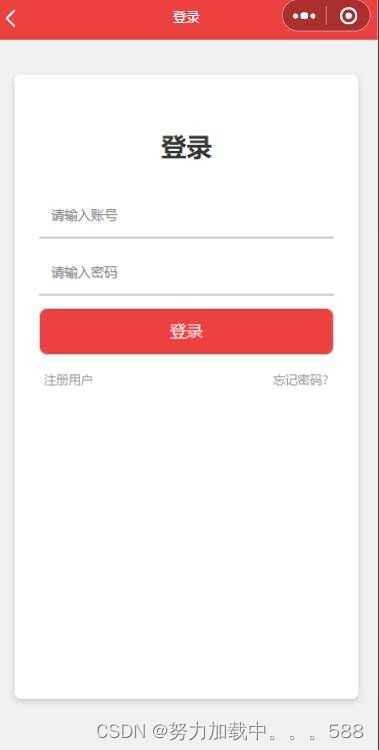24.java程序设计-基于SSM框架的微信乐曲播放器小程序的设计与实现
摘要
在这一部分,简要介绍研究的背景、目的、方法和主要结果,为读者提供对论文内容的快速了解。
第一章:引言
1.1 背景
- 微信小程序和乐曲播放器的兴起
- 音乐APP的普及和用户需求
1.2 研究动机
- 提高用户在微信平台上的音乐体验
- SSM框架的选择和优势
1.3 研究目的与意义
- 实现一个基于SSM框架的微信小程序乐曲播放器
- 提升小程序用户对音乐服务的满意度
第二章:需求分析与系统设计
2.1 用户需求分析
- 用户对小程序音乐功能的期望
2.2 功能需求分析
- 乐曲搜索、播放、收藏等功能
2.3 非功能性需求分析
- 用户界面友好、响应迅速等
2.4 系统架构设计
- 小程序前端与SSM框架后端的交互
第三章:技术选型与设计
3.1 SSM框架简介
- Spring、Spring MVC、MyBatis的作用和特点
3.2 微信小程序开发技术
- 小程序的架构和开发流程
3.3 数据库设计
- 歌曲信息、用户收藏等数据表设计
数据库设计代码:
CREATE TABLE User (
UserId INT PRIMARY KE AUTO_INCREMENT,
OpenId VARCHAR(50) NOT NULL,
Nickname VARCHAR(50),
AvatarUrl VARCHAR(255),
-- Add other user-related fields as needed
);
CREATE TABLE Song (
SongId INT PRIMARY KY AUTO_INCREMENT,
Title VARCHAR(100) NOT NULL,
Artist VARCHAR(100),
Album VARCHAR(100),
Genre VARCHAR(50),
FilePath VARCHAR(255) NOT NULL,
-- Add other song-related fields as needed
);
CREATE TABLE UserFavorite (
FavoriteId INT PRIMAR KEY AUTO_INCREMENT,
UserId INT,
SongId INT,
PRIMARY KEY (UserId, SongId),
FOREIGN KEY (UserId) REFERENCES User(UserId),
FOREIGN KEY (SongId) REFERENCES Song(SongId)
);
CREATE TABLE PlayRecord (
RecordId INT PRIMARY KEY AUTO_INCREMENT,
UserId INT,
SongId INT,
PlayTime TIMESTAMP DEFULT CURRENT_TIMESTAMP,
FOREIGN KEY (UserId) REFERENCES User(UserId),
FOREIGN KEY (SongId) REFERENCES Song(SongId)
);
第四章:系统实现
4.1 开发环境搭建
- 小程序开发工具、SSM框架配置
4.2 数据库表结构实现
- 数据库的创建和初始化
4.3 小程序界面实现
- 页面设计、组件开发
前端页面代码:
微信乐曲播放器
{{item.title}}
{{item.artist}}
/* pages/index/index.wxss */
.container {
padding: 20rpx;
}
.header {
font-size: 24rpx;
font-weight: bold;
margin-bottom: 20rpx;
}
.song-list {
display: flex;
flex-wrap: wrap;
}
.song-item {
width: calc(33.33% - 20rpx);
margin-right: 20rpx;
margin-bottom: 20rpx;
}
.cover {
width: 100%;
height: 150rpx;
}
.info {
padding: 10rpx;
}
.title {
font-size: 16rpx;
font-weight: bold;
}
.artist {
font-size: 14rpx;
color: #666;
}
// pages/index/index.js
Page({
data: {
songList: [
{ songId: 1, title: 'Song 1', artist: 'Artist 1', coverUrl: 'path/to/cover1.jpg' },
{ songId: 2, title: 'Song 2', artist: 'Artist 2', coverUrl: 'path/to/cover2.jpg' },
// Add more songs as needed
],
},
playSong: function (event) {
const songId = event.currentTarget.dataset.songid;
// Navigate to the song detail page or implement the play logic
wx.navigateTo({
url: '/pages/song/detail?songId=' + songId,
});
},
});
// pages/song/detail.js
Page({
data: {
song: {},
},
onLoad: function (options) {
const songId = options.songId;
// Fetch song details from the server or other data source
this.setData({
song: {
songId: songId,
title: 'Song ' + songId,
artist: 'Artist ' + songId,
coverUrl: 'path/to/cover' + songId + '.jpg',
filePath: 'path/to/song' + songId + '.mp3',
// Add more song details as needed
},
});
},
});
4.4 后端业务逻辑实现
- 小程序与后端的数据交互、乐曲播放逻辑
后端模块部分代码:
// User.java
public class User {
private int userId;
private String openId;
private String nickname;
private String avatarUrl;
// Add other user-related fields as needed
// Getters and setters
}
// Song.java
public class Song {
private int songId;
private String title;
private String artist;
private String album;
private String genre;
private String filePath;
// Add other song-related fields as needed
// Getters and setters
}
// UserFavorite.java
public class UserFavorite {
private int favoriteId;
private User user;
private Song song;
// Getters and setters
}
// PlayRecord.java
public class PlayRecord {
private int recordId;
private User user;
private Song song;
private Timestamp playTime;
// Getters and setters
}
// UserService.java
public interface UserService {
User getUserById(int userId);
User getUserByOpenId(String openId);
void addUser(User user);
void updateUser(User user);
void deleteUser(int userId);
// Other methods as needed
}
// SongService.java
public interface SongService {
Song getSongById(int songId);
List getAllSongs();
void addSong(Song song);
void updateSong(Song song);
void deleteSong(int songId);
// Other methods as needed
}
// UserFavoriteService.java
public interface UserFavoriteService {
List getUserFavorites(int userId);
void addFavorite(UserFavorite favorite);
void removeFavorite(int favoriteId);
// Other methods as needed
}
// PlayRecordService.java
public interface PlayRecordService {
List getUserPlayRecords(int userId);
void addPlayRecord(PlayRecord playRecord);
// Other methods as needed
}
// UserController.java
@RestController
@RequestMapping("/api/user")
public class UserController {
// Inject UserService and handle HTTP requests
}
// SongController.java
@RestController
@RequestMapping("/api/song")
public class SongController {
// Inject SongService and handle HTTP requests
}
// UserFavoriteController.java
@RestController
@RequestMapping("/api/favorite")
public class UserFavoriteController {
// Inject UserFavoriteService and hanle HTTP requests
}
// PlayRecordController.java
@RestController
@RequestMapping("/api/playrecord")
public class PlayRecordController {
// Inject PlayRecordService and handle HTP requests
}
第五章:系统测试与性能评估
5.1 单元测试
- 对小程序和后端各模块的测试
5.2 集成测试
- 系统整体功能的测试
5.3 性能测试
- 测试系统的并发性、响应时间等
实现部分页面展示:
第六章:结果与分析
6.1 功能测试结果
- 分析系统功能的实现情况
6.2 性能测试结果
- 系统的性能评估
6.3 用户反馈与改进意见
- 从用户角度收集反馈
第七章:比较与展望
7.1 与现有音乐小程序的比较
- 对比其他音乐小程序的功能和性能
7.2 技术实现上的讨论
- 遇到的问题和解决方案
7.3 后续工作展望
- 对系统未来的优化和改进方向
第八章:总结与建议
8.1 工作总结
- 总结研究工作的主要成果
8.2 创新点与不足之处
- 论文和系统的创新之处及存在的不足
8.3 对未来工作的建议
- 针对未来研究方向的建议
参考文献
编程技术交流、源码分享、模板分享、网课分享
企鹅@裙:772162324








